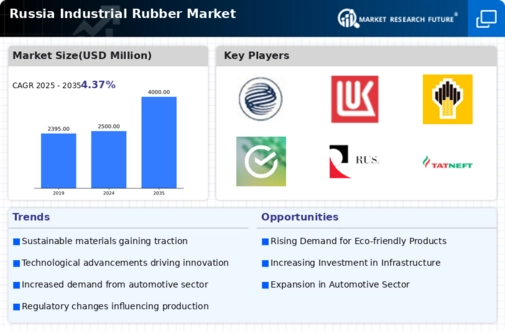The is characterized by a dynamic competitive landscape that reflects the country's industrial capabilities and the increasing demand for rubber products across various sectors. The market is driven by factors such as technological advancements, globalization, and the growing automotive and construction industries, which fuel the need for durable and high-performance rubber materials. Companies operating within this market are focusing on innovative solutions and strategic partnerships to enhance their competitive edge.
Key players in the sector are investing in research and development to develop superior rubber compounds and are implementing advanced manufacturing processes to meet the evolving needs of consumers and industries alike. The presence of both domestic and international players contributes to a competitive environment, encouraging continuous improvements in product offerings and operational efficiencies.Rubber Technology has established itself as a significant player in the by leveraging its extensive experience and expertise in rubber manufacturing.
The company is recognized for its robust product portfolio, which includes a wide range of industrial rubber goods designed to meet the stringent requirements of various applications. With a focus on quality and innovation, Rubber Technology has developed strategic manufacturing processes that enable it to produce high-performance rubber products that cater to multiple industries, including automotive, aerospace, and construction. Their commitment to sustainability and eco-friendly practices also sets them apart in a market that increasingly values environmentally conscious solutions.
The company's ability to adapt to market trends and customer demands has solidified its reputation and strengthened its market presence within the region.Alabuga Polymer plays a crucial role in the , positioning itself as a key manufacturer of high-quality rubber products. The company specializes in producing synthetic rubber and has developed a comprehensive range of offerings tailored to various industrial applications. Alabuga Polymer focuses on enhancing its market presence through strategic collaborations and partnerships, allowing it to expand its distribution network and improve customer outreach.
Their strength lies in their state-of-the-art production facilities that utilize advanced technologies to ensure consistent quality and efficient production processes. Furthermore, Alabuga Polymer has engaged in several mergers and acquisitions to bolster its market position, facilitating access to new technologies and broader market expertise. The company's dedication to innovation and quality, combined with its strategic initiatives, underscores its significance in the Russian industrial rubber landscape and enhances its competitive standing.

















Leave a Comment